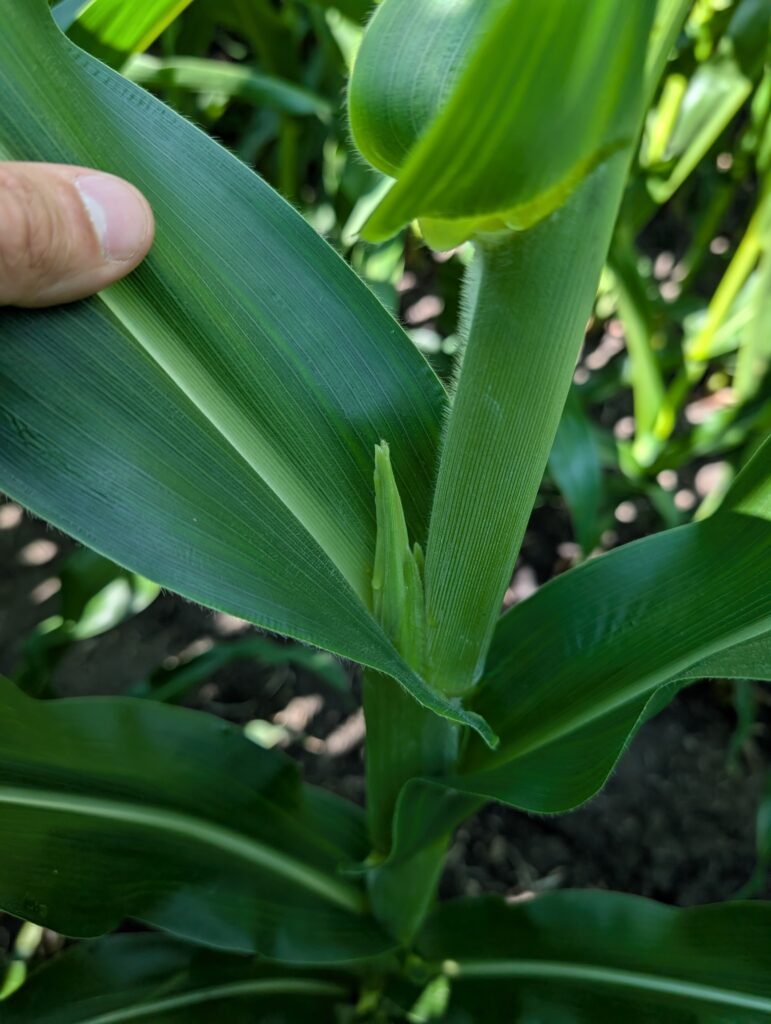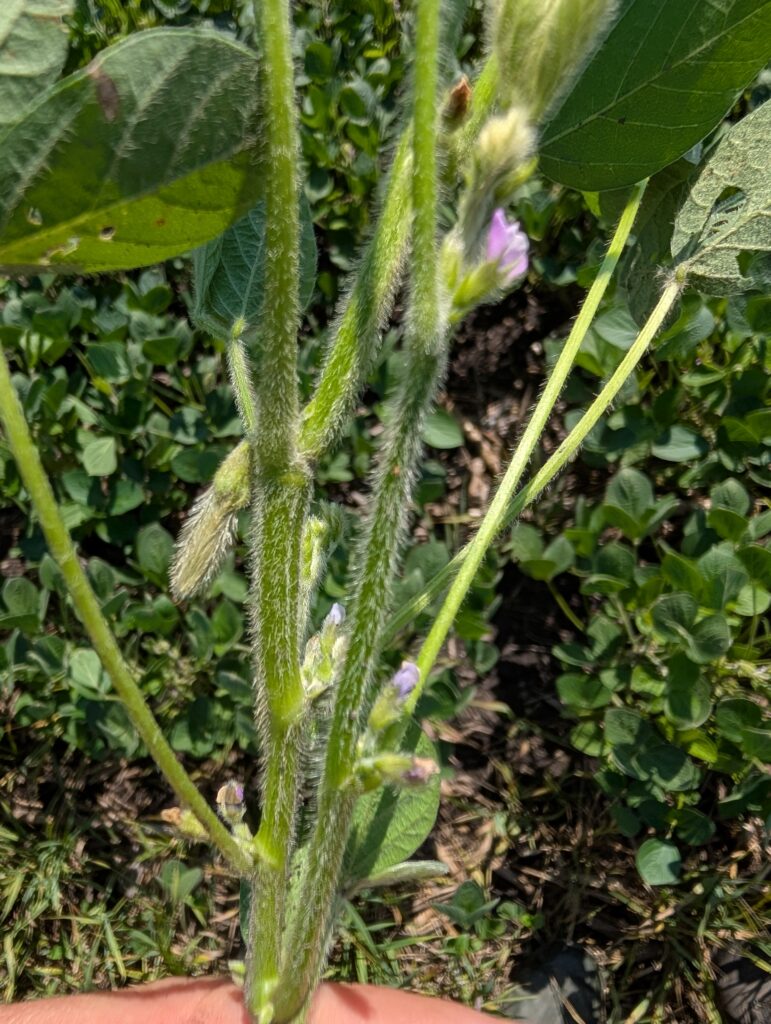Archive
If you find yourself wondering what happened when, look no further than the Crop Report Archive. We’ve compiled past reports, listing the most recent first. You can search by Region, Month, or Reporter to find information.


Another dry week for northern IL, with a few isolated storms occurring farther west or in Chicago. We have slid back into a predominantly D1 drought, with large areas of Kane and Will counties entering into a D2 drought. Corn and soybeans have started to grow out of the early-season stunting, but both crops are likely to be short overall this season. Temperatures dropped a little bit this past week but were still in the mid to upper 80s. Depending on planting date, corn is between 1,200–1,250 growing degree units as we continue to progress through the season.
Corn is averaging V11–V13 across the region. Some isolated fields are still lagging quite a bit behind, around V8–V9, but an overwhelming majority are spiking. Ears are starting to develop, and a small handful of fields have tassels emerging. I expect that by next week most fields will have tasseling corn. Disease is still incredibly low for this time of year; I have not found tar spot in any fields that I have scouted — let alone gray or northern blight. Many areas south of the I-80 corridor have confirmed cases, with the only county north being Carroll County out west. I continue to encourage regular scouting of your fields to stay on top of diseases. I have not seen any insect pests, but fall armyworm damage has been reported in sweet corn, so that is something to monitor.
Soybeans are beginning to enter R3 as pods are developing on the lowest nodes. Plants are healthy and beginning to fully shade out the rows. I have not seen any diseases yet, due mostly to the weather. Japanese beetles are present in most fields, but numbers aren’t anything to be concerned about currently. I have seen quite a bit of herbicide residual burn on beans this season, and it’s unclear whether the hot and dry weather is the culprit or different chemical mixes. Either way, the beans are growing out of it.
If you see any disease, insect damage, or anything else of note as the season continues, please feel free to email me images with descriptions at sbbrand2@illinois.edu.


 and then
and then